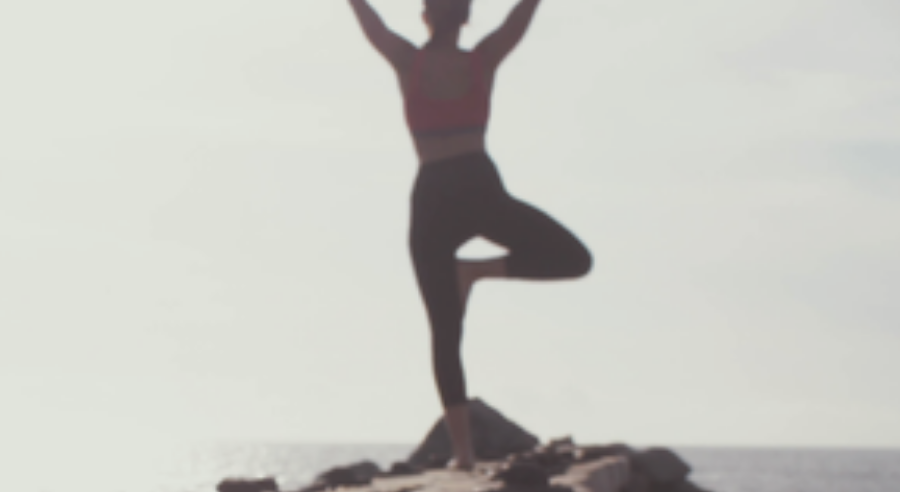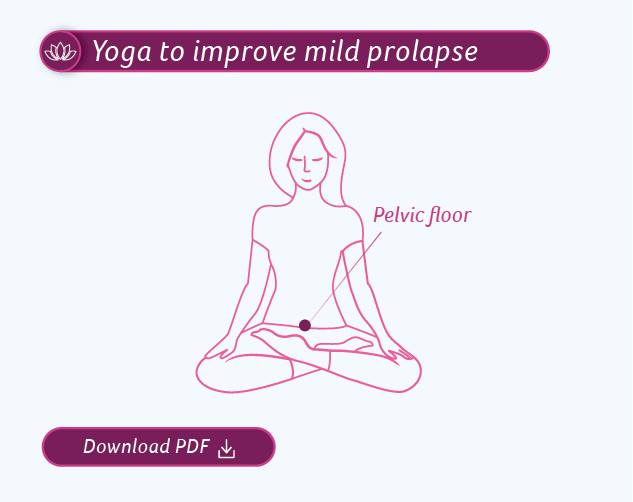LIVING WITH INCONTINENCE
Incontinence exercise
Read more
Yoga can assist a mild prolapse of the bladder, and be an enjoyable, relaxing activity. So why not give it a try.
Although the term yoga in the Western world typically refers to a classification of exercises, its origins encompass a far broader range of practices. Thought to be more than 2,500 years old, yoga developed in India and the Himalayas as a philosophy. It includes regimes of physical, spiritual and mindful practices designed to achieve goals including the harmonise the body, mind and spirit. Its teachings cover relaxation, diet, exercise and positive thinking that these days, we’d probably refer to as a ‘lifestyle’.
An adapted form of yoga was introduced to the West in the late 19th century by the now-famous guru, Swami Vivekananda, as a form of posture-based physical fitness, stress-relief and relaxation.
There are various yoga styles, from the gentle to the very challenging. Here’s a summary of a few popular types:
Vinyasa yoga
This is taught at most gyms and studios and involves controlled breathing while performing a series of poses that flow from one to the next. The sequence of postures and intensity can vary by class, and it’s usually performed with music and verbal instruction.
Ashtanga yoga
More traditional than Vinyasa, Ashtanga also involves fluid movements of poses with synchronised breathing. However, they are performed in a set sequence, usually without music and sometimes, even without instruction to maintain silence.
Iyengar yoga
This style uses equipment such as blocks, straps and bolsters. It’s usually taught without music and at a slow pace to enable participants to focus on the correct postures.
Bikram yoga
Also known as ‘hot yoga’, these 90-minute classes are taught in a mirrored room heated to 41C and with 40% humidity.
Jivamukti Yoga
These classes incorporate chanting, which overtly elevates the spiritual aspect of the activity.
Power Yoga
A faster-paced version of Hatha yoga, power yoga has an emphasis on a core and upper body workout. It is a more active approach to the traditional Hatha yoga poses. The Ashtanga yoga poses are performed more quickly and with added core exercises and upper body work.
Yin Yoga
This is quite a passive style, with poses held for up to five minutes. The purpose is to allow the muscles, ligaments and joints to relax into the pose, using gravity. It’s a tranquil style of yoga, more like a stretching class.
Hatha Yoga
Hatha is a general term used to describe a category of yoga that includes most of the styles above.
For more details on different yoga styles, check out the Do You Yoga website.
Joseph Pilates devised Pilates in the early to the mid-20th century. It was designed in Britain during World War I to allow bed-ridden patients to regain strength while convalescing, using resistance from springs. It later found favour among professional dancers as a safe way to restore and maintain strength after injury.
The main difference between yoga and pilates is the equipment and apparatus used for pilates.
That said, both are great for core muscle strength, including the pelvic floor, so can improve a mild bladder prolapse. You can read more about Pilates and strengthening the pelvic floor in this article.
If you’re unsure if Pilates or yoga would be best for you, try both. Most gyms and studios offer a free trial class, so go along and see which you prefer. In some cases, people enjoy them equally and decide to incorporate both into their exercise schedule.
This article focuses on yoga, but you can read more about Pilates and Strengthening the Pelvic Floor, here. Both yoga and Pilates can benefit a mild bladder prolapse, so either is a great choice.
A ‘prolapse’ describes the condition where an organ that has dropped out of place. In the case of bladder prolapse, the bladder has fallen onto the front vaginal wall and in extreme cases, can even press that wall down and out of the vagina opening.
Other names for this condition are cystocele, an anterior vaginal wall prolapse and ‘a fallen bladder’.
A mild, or stage one, prolapse is when the bladder has pushed only a small way into the vagina. You may be able to touch the bulge on the front wall from inside your vagina. Other symptoms include a heavy or dragging sensation, discomfort during intercourse, difficulty starting urine flow, emptying the bladder and keeping a tampon in place.
Another symptom is reoccurring UTIs, which you can read more about here.
You can read more about bladder prolapse, including the different stages, here.

The leading cause of prolapse is a weakened or damaged pelvic floor. That’s the muscle that sits in the base of the pelvis like a sling, attached to the pubic bone at the front and coccyx at the back. This muscle supports all the pelvic organs, keeping them in place. It also assists with bladder and bowel control.
There are many ways the muscle can become weak or damaged, such as:
If the prolapse is mild, as described above, strengthening the pelvic floor muscle can pull the bladder back into place. (Please note that if the prolapse is moderate or severe, protruding into and even out of the vaginal, you will need to see your doctor, most likely for corrective surgery. In these cases, the connective tissue is stretched and damaged, so just strengthening the pelvic floor won’t fix the problem. That said, a stronger pelvic floor can assist in alleviating some of the symptoms. They’re usually recommended post-surgery and are a preventative measure – so exercising it for strength is always beneficial.)
If you do have a mild prolapse, it’s important to note which yoga positions can help improve it, and which can make it worse.
These poses are suggested by the website pelvicexercices.com.au and provided as a guide. It all cases, you should seek medical advice as well as discussing your goals with a qualified yoga instructor.
This is “the root” or pelvic and deep abdominal core muscle exercise and can be done in isolation or in conjunction with other poses. The focus is on drawing the pelvic floor in and up. Keep the abdominal muscles relatively relaxed as engaging them too forcefully may push the pelvic floor – and the prolapse – downwards. For a prolapse, combining it with the Mountain Pose assists with support.
Because the pelvic floor responds when we breathe, moving up and down in the same rhythm, a focus on breathing may be required before starting to engage the pelvic floor. There are several Pranayama exercises, including the following examples taken from the website, Yogic Way of Life.
Poor posture puts excessive pressure on the pelvic floor, so this pose, which engages the core postural muscles is ideal for improving support.
Some of these postures alleviate prolapse symptoms such as bulging and dragging – but not all upside-down poses are appropriate. Check with the instructor. If you have back, lower back or neck injuries or pain, you must attempt them under qualified supervision.

Yoga offers many benefits, including the ability to strengthen the pelvic floor, improve posture and assist with relaxation, but if you have a prolapse, consult with your doctor. They will be able to determine the extent and stage of the prolapse and advise if yoga could be helpful in your circumstances.
associated with a bladder prolapse
Incontinence from a bladder prolapse is not uncommon. A weak pelvic floor reduces the ability to ‘hold on’, especially from the pressure of a cough or sneeze. If you’re experiencing urine leaks, you may feel more comfortable with a disposable, absorbent product while you’re strengthening your pelvic floor muscle.
All products in the TENA range have been designed to handle the thinner, faster flow of a weak bladder, locking fluid away and keeping you dry. They’re soft, made of breathable fabric and are highly absorbent to minimise bulk and maximise discretion – even under activewear. They all contain odour-control which doesn’t mask but prevents odours from developing.
TENA Liners are ideal for the small leaks associated with stress incontinence. If you need more protection, check out the extensive range of TENA Pads.
To find the best product for your needs, head to the, where you can also order free samples.
Sources:
https://www.yogaaustralia.org.au/what-is-yoga/
https://en.wikipedia.org/wiki/Yoga
https://en.wikipedia.org/wiki/Swami_Vivekananda
https://www.ekhartyoga.com/resources/styles/yin-yoga
https://www.betterhealth.vic.gov.au/health/conditionsandtreatments/bladder-prolapse
https://www.joannahelcke.com/news/2016/11/21/prolapse-what-you-need-to-know-but-nobody-talks-about/
https://northeasternurology.com.au/female-urology/prolapse/
https://jeanhailes.org.au/health-a-z/bladder-bowel/prolapse-bladder-weakness
Asaleo Care makes no warranties or representations regarding the completeness or accuracy of the information. This information should be used only as a guide and should not be relied upon as a substitute for professional, medical or other health professional advice